Sarah L. Johnson's Blog, page 57
October 15, 2018
Interview with Margaret Porter, author of Beautiful Invention: A Novel of Hedy Lamarr
Margaret Porter's new novel Beautiful Invention reveals, in lively and convincing fashion, the complicated life of Hedy Lamarr: Austrian-born screen star, film producer, wartime fundraiser, and talented inventor. While she was best known as a glamour girl, the results of her scientific collaboration with composer George Antheil are credited as a precursor to today's Bluetooth technology. I'm happy to offer an interview today with Margaret, and I'd like to thank her for answering my questions and sending me a copy of the book, which is being launched in the US today.
 What convinced you to write a novel based on Hedy Lamarr, and what aspects about her do you admire the most?
What convinced you to write a novel based on Hedy Lamarr, and what aspects about her do you admire the most?
The desire to write about Hedy resulted from various alignments and serendipities. Not many years after her death, I was doing an internet search for some '30s and '40s film stars—her near contemporaries—and kept hitting articles about her newly publicized technological achievement. At the time, I filed it in the back of my mind as merely “interesting” and “surprising” and “unexpected.”
Then, in 2010, two biographies of her were published—one by Ruth Barton and the other by Michael Shearer. The following year came Hedy’s Folly by Richard Rhodes, primarily about her invention of frequency-hopping and spread-spectrum technology. I still remember hearing the author’s interview on NPR’s Diane Rehm Show. At the time, my focus was 17th- and 18th-century England, but gradually I considered starting a novel about Hedy Lamarr, if only to challenge myself.
The time period seemed so far outside my familiarity zone. Yet I had studied cinema history extensively during my graduate film studies, and after earning my degree I continued reading about related subjects just for pleasure. And I’ve always been a TCM addict. When I was unable to decide which competing 17th or 18th century subject to pursue, Hedy slipped in and co-opted my attention. It helped having two fine biographies of her, and many other explorations of her life and career—these were a great foundation. But Beautiful Invention is largely based on my own primary research, and there was so, so much background material to utilize.
Beautiful Invention shows that Hedy Lamarr had a thoroughly eventful life in the public eye, beginning when she was just sixteen. I enjoyed your depiction of the many facets of her life, her scientific accomplishments, and her need and desire to continually reinvent herself. How did you decide what aspects to depict on the page, and which to skim over or leave out?
The filtering process was probably my greatest challenge. Earlier drafts contained more of her life in Austria, because that was the most unfamiliar aspect of her life to most people—apart from her hobby of inventing. And then I found that different periods of her life fit rather neatly into a three-part structure. She starred in so many films, therefore I had to pick and choose which roles were important in the overall trajectory of her career, and where the primary focus should be her complex personal life. Early on I decided to conclude on an ambiguously positive note, while at the same time foreshadowing her next reinvention. I had no intention of pursuing her into her post-Hollywood life. It was so tortured, as anyone who viewed the Bombshell documentary is aware.
In the afterword, you described having learned about Hedy at a young age, since your father had thought highly of her. How did your impressions of Hedy change as you delved into her story and researched it more thoroughly?
When I began the novel, I thought of her chiefly as a beautiful actress with a brilliantly creative brain. I couldn’t help being impressed by her curiosity, her intellect, and her determination. I discovered how mercurial she was, and how very enigmatic she could be in her relationships. Because Hedy was a collection of contradictions, I wanted to be very intentional in clarifying motivations at decision points in the story.
Her ethnic background was one of the reasons she needed to leave Austria when she did. But she never admitted that all her grandparents were Jewish, not even to her own children. Hitler was aware, and it was no secret in Europe—yet during her years of greatest prominence, hardly any American press accounts mentioned it. She regarded her beauty as a curse, and hated that people’s expectations of her were based wholly on the way she looked. But she needed to capitalize on her appeal in order to make a living. She was a down-to-earth homebody but professionally ambitious.
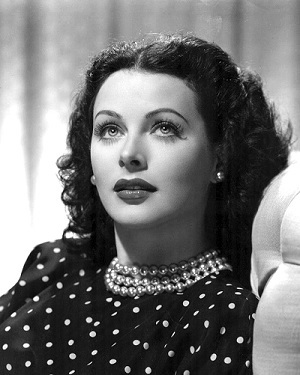 Hedy Lamarr, publicity photo for The Heavenly Body (1944)
Hedy Lamarr, publicity photo for The Heavenly Body (1944)
The glamour girl image that MGM projected was uncomfortable for her, and she had to sustained it to survive and thrive within the studio system. She wanted to excel at acting but found movie making tedious. She longed to commit to a true soul mate, but fell in love too easily and married too hastily. More than once.
I enjoyed the nuanced depiction of Hedy’s marriage to Fritz Mandl, although her life with him definitely wasn’t easy. I found it interesting that they stayed in contact years later. How did you gain insight into their relationship?
Fritz is also an enigma. To a very great degree, he acted from unalloyed self-interest. I regard his continued contact with Hedy as an artifact of his controlling and possessive nature: “Once mine, forever mine.” But maintaining his connection to the world’s most famous film star was also very convenient for him. After his association with the Nazi regime in Germany became widely known, he would have wanted to salvage his reputation. And I suspect Hedy was grateful to him, in a way, for expanding her horizons beyond the theatre through their social life.
There’s no doubt she met interesting and prominent people during that marriage. At the same time, she was very frustrated and unhappy—who wouldn’t be? But one notable aspect of her character was an ability to move beyond the past and live almost wholly in the present. She prided herself on remaining friends with Fritz, although she probably didn’t expect to in the worst moments of their marriage. Based on the evidence, their parting was more mutual and possibly more amicable than MGM wanted people to believe. The studio had a vested interest in covering over the Mandl taint.
Did you find that your background as an actress informed your perspective on Hedy’s life?
Most definitely. This is my fourth novel with a performer as a heroine, and I do draw on my experience as necessary. Stardom—in films, or on the stage—is a common teenage dream, one that Hedy and I shared. I’ve spent years of my life, since childhood, in the theatre, and from my teens I was on location with feature films or television shows. Unlike Hedy, I never had the pressure of carrying a film, and its profitability certainly did not depend on my efforts as an extra! I felt an especially close kinship with her when she ventured into producing, because that’s the path I eventually followed. I would like to have focused on that brief chapter of her career more than I was able to in this book.
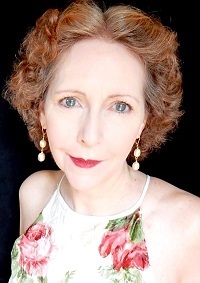 author Margaret PorterYour last two novels have moved in the new direction of biographical fiction. What appeals to you about writing novels based on historical figures?
author Margaret PorterYour last two novels have moved in the new direction of biographical fiction. What appeals to you about writing novels based on historical figures?
Biographical fiction was my destiny. In my youth, those were the types of novels I read and re-read and most wanted to write. As an adult reader, I followed the same pattern. Within a few years of finishing graduate school, my first novel was published as a Regency romance, and eventually I was writing longer, more complex books, extremely fact-based. I got distracted from fiction by an ambitious attempt at a literary biography. While intensely researching my subject, the light dawned. “What was I thinking? Here’s my long-awaited opportunity to write a biographical novel!”
That individual generated so much speculation and unsatisfied curiosity, despite my deep immersion in the historical record, and I needed my imagination to fill the gaps. And to supply the deeply personal details and motivations and reactions that are inevitably unavailable to the researcher. For me, that’s what exerts so strong and irresistible an appeal. But at that time I wasn’t entirely clear on the scope of the plot, or its structure, the character arc. So I decided to clear my head by exploring an intriguing but obscure 17th century couple rooted in my own family tree . . . which resulted in A Pledge of Better Times. The next four planned projects also feature real people of the past—though none as famous as Hedy Lamarr!
~
MARGARET PORTER is the award-winning, bestselling author of Beautiful Invention: A Novel of Hedy Lamarr and twelve other historical novels for U.S. and foreign-language publishers. She studied British history in the U.K. and afterwards worked professionally in theatre, film, and television. Margaret returns annually to Great Britain and Europe to research her novels. She and her husband live in New England with their dogs, dividing their time between an architecturally unique book-filled house in a small city and a waterfront cottage located on one of the region’s largest lakes. More information is available at her website, www.margaretporter.com.
 What convinced you to write a novel based on Hedy Lamarr, and what aspects about her do you admire the most?
What convinced you to write a novel based on Hedy Lamarr, and what aspects about her do you admire the most? The desire to write about Hedy resulted from various alignments and serendipities. Not many years after her death, I was doing an internet search for some '30s and '40s film stars—her near contemporaries—and kept hitting articles about her newly publicized technological achievement. At the time, I filed it in the back of my mind as merely “interesting” and “surprising” and “unexpected.”
Then, in 2010, two biographies of her were published—one by Ruth Barton and the other by Michael Shearer. The following year came Hedy’s Folly by Richard Rhodes, primarily about her invention of frequency-hopping and spread-spectrum technology. I still remember hearing the author’s interview on NPR’s Diane Rehm Show. At the time, my focus was 17th- and 18th-century England, but gradually I considered starting a novel about Hedy Lamarr, if only to challenge myself.
The time period seemed so far outside my familiarity zone. Yet I had studied cinema history extensively during my graduate film studies, and after earning my degree I continued reading about related subjects just for pleasure. And I’ve always been a TCM addict. When I was unable to decide which competing 17th or 18th century subject to pursue, Hedy slipped in and co-opted my attention. It helped having two fine biographies of her, and many other explorations of her life and career—these were a great foundation. But Beautiful Invention is largely based on my own primary research, and there was so, so much background material to utilize.
Beautiful Invention shows that Hedy Lamarr had a thoroughly eventful life in the public eye, beginning when she was just sixteen. I enjoyed your depiction of the many facets of her life, her scientific accomplishments, and her need and desire to continually reinvent herself. How did you decide what aspects to depict on the page, and which to skim over or leave out?
The filtering process was probably my greatest challenge. Earlier drafts contained more of her life in Austria, because that was the most unfamiliar aspect of her life to most people—apart from her hobby of inventing. And then I found that different periods of her life fit rather neatly into a three-part structure. She starred in so many films, therefore I had to pick and choose which roles were important in the overall trajectory of her career, and where the primary focus should be her complex personal life. Early on I decided to conclude on an ambiguously positive note, while at the same time foreshadowing her next reinvention. I had no intention of pursuing her into her post-Hollywood life. It was so tortured, as anyone who viewed the Bombshell documentary is aware.
In the afterword, you described having learned about Hedy at a young age, since your father had thought highly of her. How did your impressions of Hedy change as you delved into her story and researched it more thoroughly?
When I began the novel, I thought of her chiefly as a beautiful actress with a brilliantly creative brain. I couldn’t help being impressed by her curiosity, her intellect, and her determination. I discovered how mercurial she was, and how very enigmatic she could be in her relationships. Because Hedy was a collection of contradictions, I wanted to be very intentional in clarifying motivations at decision points in the story.
Her ethnic background was one of the reasons she needed to leave Austria when she did. But she never admitted that all her grandparents were Jewish, not even to her own children. Hitler was aware, and it was no secret in Europe—yet during her years of greatest prominence, hardly any American press accounts mentioned it. She regarded her beauty as a curse, and hated that people’s expectations of her were based wholly on the way she looked. But she needed to capitalize on her appeal in order to make a living. She was a down-to-earth homebody but professionally ambitious.
 Hedy Lamarr, publicity photo for The Heavenly Body (1944)
Hedy Lamarr, publicity photo for The Heavenly Body (1944)The glamour girl image that MGM projected was uncomfortable for her, and she had to sustained it to survive and thrive within the studio system. She wanted to excel at acting but found movie making tedious. She longed to commit to a true soul mate, but fell in love too easily and married too hastily. More than once.
I enjoyed the nuanced depiction of Hedy’s marriage to Fritz Mandl, although her life with him definitely wasn’t easy. I found it interesting that they stayed in contact years later. How did you gain insight into their relationship?
Fritz is also an enigma. To a very great degree, he acted from unalloyed self-interest. I regard his continued contact with Hedy as an artifact of his controlling and possessive nature: “Once mine, forever mine.” But maintaining his connection to the world’s most famous film star was also very convenient for him. After his association with the Nazi regime in Germany became widely known, he would have wanted to salvage his reputation. And I suspect Hedy was grateful to him, in a way, for expanding her horizons beyond the theatre through their social life.
There’s no doubt she met interesting and prominent people during that marriage. At the same time, she was very frustrated and unhappy—who wouldn’t be? But one notable aspect of her character was an ability to move beyond the past and live almost wholly in the present. She prided herself on remaining friends with Fritz, although she probably didn’t expect to in the worst moments of their marriage. Based on the evidence, their parting was more mutual and possibly more amicable than MGM wanted people to believe. The studio had a vested interest in covering over the Mandl taint.
Did you find that your background as an actress informed your perspective on Hedy’s life?
Most definitely. This is my fourth novel with a performer as a heroine, and I do draw on my experience as necessary. Stardom—in films, or on the stage—is a common teenage dream, one that Hedy and I shared. I’ve spent years of my life, since childhood, in the theatre, and from my teens I was on location with feature films or television shows. Unlike Hedy, I never had the pressure of carrying a film, and its profitability certainly did not depend on my efforts as an extra! I felt an especially close kinship with her when she ventured into producing, because that’s the path I eventually followed. I would like to have focused on that brief chapter of her career more than I was able to in this book.
 author Margaret PorterYour last two novels have moved in the new direction of biographical fiction. What appeals to you about writing novels based on historical figures?
author Margaret PorterYour last two novels have moved in the new direction of biographical fiction. What appeals to you about writing novels based on historical figures? Biographical fiction was my destiny. In my youth, those were the types of novels I read and re-read and most wanted to write. As an adult reader, I followed the same pattern. Within a few years of finishing graduate school, my first novel was published as a Regency romance, and eventually I was writing longer, more complex books, extremely fact-based. I got distracted from fiction by an ambitious attempt at a literary biography. While intensely researching my subject, the light dawned. “What was I thinking? Here’s my long-awaited opportunity to write a biographical novel!”
That individual generated so much speculation and unsatisfied curiosity, despite my deep immersion in the historical record, and I needed my imagination to fill the gaps. And to supply the deeply personal details and motivations and reactions that are inevitably unavailable to the researcher. For me, that’s what exerts so strong and irresistible an appeal. But at that time I wasn’t entirely clear on the scope of the plot, or its structure, the character arc. So I decided to clear my head by exploring an intriguing but obscure 17th century couple rooted in my own family tree . . . which resulted in A Pledge of Better Times. The next four planned projects also feature real people of the past—though none as famous as Hedy Lamarr!
~
MARGARET PORTER is the award-winning, bestselling author of Beautiful Invention: A Novel of Hedy Lamarr and twelve other historical novels for U.S. and foreign-language publishers. She studied British history in the U.K. and afterwards worked professionally in theatre, film, and television. Margaret returns annually to Great Britain and Europe to research her novels. She and her husband live in New England with their dogs, dividing their time between an architecturally unique book-filled house in a small city and a waterfront cottage located on one of the region’s largest lakes. More information is available at her website, www.margaretporter.com.
Published on October 15, 2018 17:14
October 10, 2018
The Queen's Promise: a panoramic view of the early English Civil War years
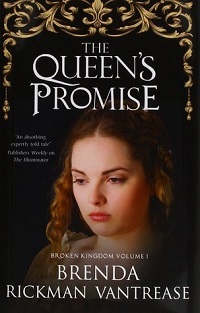 Vantrease’s long-awaited return to the historical fiction scene showcases her painstaking attention to characterization and period atmosphere. Opening with a prologue depicting the execution of Charles I’s advisor Thomas Wentworth, Earl of Strafford, in 1641, the novel follows a wide array of individuals as tensions between the king and Parliament erupt into civil war.
Vantrease’s long-awaited return to the historical fiction scene showcases her painstaking attention to characterization and period atmosphere. Opening with a prologue depicting the execution of Charles I’s advisor Thomas Wentworth, Earl of Strafford, in 1641, the novel follows a wide array of individuals as tensions between the king and Parliament erupt into civil war.In 1642, Queen Henrietta Maria, detested by England’s people for her extravagances and fervent Catholicism, travels abroad to deliver the 10-year-old Princess Mary to her future husband and convince the Dutch to buy England’s crown jewels. She has promised to help finance her husband’s battles and return to her younger children, but her words may be as empty as those of her husband, who had vowed to save his friend Strafford.
Meanwhile, young Prince Henry and Princess Elizabeth are quietly taken into the care of Lucy Hay, Countess of Carlisle—Strafford’s former lover, Henrietta’s sometime friend, and current lover of Parliamentary leader John Pym.
Lucy, a courtier who was one of the era’s most intriguing personalities, tended to serve both sides simultaneously when it suited her purposes. In Vantrease’s portrayal, this doesn’t demonstrate fickleness on her part but a unique blend of survival instinct and human compassion.
Although Henrietta and Lucy are the ostensible protagonists, the narrative splits into many different strands that take a long time to form into a cohesive story. The chapters with Caroline Pendleton, wife of a wool merchant turned knight, succeed in evoking the desperate plight of women left alone during wartime. Others focus on James Whittier, a nobleman, printer, and one-time highwayman whose path crosses Caroline’s.
While their stories are interesting when taken individually, the overlarge cast makes the novel lose focus. And so the Broken Kingdom series has a fairly slow start; hopefully Part Two will draw all the stories together more tightly.
Brenda Rickman Vantrease's The Queen's Promise was published by Severn House in August. Book 2, A Far Horizon, will be out next February. This review first appeared in the Historical Novels Review's August 2018 issue.
Published on October 10, 2018 07:13
October 5, 2018
Edward Carey's Little, a witty, macabre epic about the woman who became Madame Tussaud
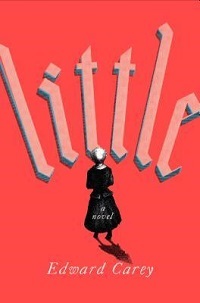 Carey presents an immensely creative epic that follows a poor orphan’s rise to become the famous Madame Tussaud.
Carey presents an immensely creative epic that follows a poor orphan’s rise to become the famous Madame Tussaud.Born in 1761, and nicknamed “Little” for her petite size, Anne Marie Grosholtz becomes the unpaid apprentice of her late mother’s odd, nervous employer, Dr. Curtius. After fleeing to Paris, they join forces with a redoubtable widow and her son. Their skills with wax attract attention, leading to their unusual museum and Marie’s invitation to tutor Princesse Elisabeth at Versailles.
At a time of rampant social disparities, the museum becomes a great equalizer: a place where royalty, poets, and notorious murderers—that is, their sculpted stand-ins—can be viewed up close, and ordinary people can participate in a lottery to be models themselves.
Mingling a sense of playfulness with macabre history, Carey depicts the excesses of wealth and violence during the French Revolution through the eyes of a talented woman who lived through it and survived. The oddball characters and gothic eccentricities evoke Tim Burton’s work, but without any fantastical elements; the reality is sufficiently strange on its own.
Carey shows how the seemingly absurd, like royal servants lodging in cupboards and artisans forced to re-create newly executed people’s heads in wax, becomes shockingly routine. The unique perspective, witty narrative voice, and clever illustrations make for an irresistible read.
I wrote this starred review for Booklist's September issue. Little will be published later this month by Riverhead in the US. Aardvark Bureau published it in the UK this week.
The question of whether there are fantastical elements in the book (see the review at Kirkus) seems up for debate; it depends on whether you believe that some of the objects Marie encounters are actually sentient, or if her perceptions are due to her unique view of the world. I chose the latter, and appreciate how it was written to be read either way.
Also, having read and loved Michelle Moran's Madame Tussaud (see my earlier review), I wondered how similar a read Little would be. My conclusion: other than being based on the same person and circumstances, they're very different in approach and tone. It's worth reading both!
Published on October 05, 2018 04:41
September 30, 2018
Reading the Past appearing on Tall Poppy Writers' #bloomblogweek

This week is blogger appreciation week on Bloom, the Facebook group for Tall Poppy Writers, a team of 42 female authors who've banded together to meet readers and promote philanthropic projects. I'm grateful to Janie Chang, author of literary fiction set in 20th-century China, for inviting me to participate and contribute a post, and thanks to the rest of the group for their support! I've been a member of the FB group for the last month and have been enjoying the conversations and camaraderie.
Please stop by the group this week for appearances from me and other book bloggers. We'll all be posting about our sites and hosting a giveaway. In my case, I'll be offering three copies of Janie's bestselling novel Dragon Springs Road , contributed by the author, as well as a copy of Frances de Pontes Peebles' The Air You Breathe, which was one of my favorites of 2018 so far.
For more about Tall Poppy Writers, please visit their site at http://www.tallpoppies.org. Here are links to my earlier reviews of novels by authors in the group:
Julie Cantrell, Into the Free, set in Depression-era MississippiSusan Meissner, As Bright as Heaven, set during the 1918 flu epidemic in PhiladelphiaWeina Dai Randel, The Moon in the Palace , about Empress Wu in 7th-century ChinaAimie K. Runyan, Daughters of the Night Sky, about the "Night Witches" of WWII, and Promised to the Crown and Duty to the Crown , about the New France settlement of 17th-century Quebec.
Hope to see you online on Facebook!
Published on September 30, 2018 09:00
September 24, 2018
Love Is Blind by William Boyd, a globe-spanning journey of passion and danger
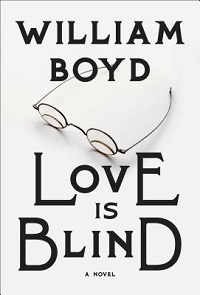 Moving from Edinburgh in 1894 to the far-flung Andaman Islands in 1906, and smoothly landing in various European cities in between, Boyd’s (Sweet Caress, 2015) affecting novel follows a young Scotsman’s ardent pursuit of a woman and its treacherous consequences.
Moving from Edinburgh in 1894 to the far-flung Andaman Islands in 1906, and smoothly landing in various European cities in between, Boyd’s (Sweet Caress, 2015) affecting novel follows a young Scotsman’s ardent pursuit of a woman and its treacherous consequences.An appealing though naive protagonist, Brodie Moncur has perfect pitch, a gift he uses as an accomplished piano tuner. He agrees to help manage a Parisian piano showroom, but he hates leaving his siblings behind with their controlling preacher father in their rural village.
Brodie’s quest for a sponsorship arrangement for his employer’s business introduces him to the celebrated pianist John Kilbarron, his shifty brother, Malachi, and John’s mistress, Russian soprano Lika Blum; they all accompany Kilbarron on his concert tours. Brodie falls hard for Lika, which leads to clandestine meetings, a high-stress lifestyle, and, eventually, much worse.
Their relationship feels more like erotic passion than love, but the novel hauntingly depicts how strong emotions can skew one’s perceptions. Boyd beautifully paints the settings and the moods they evoke while sending readers on Brodie’s adventurous, troublesome, and transformative journey.
This review first appeared in Booklist's September 15th issue. Love Is Blind will be published by Knopf on October 9th. In the UK, it was published by Viking on September 20th. This is the first novel by Boyd that I've read. While it was a smoothly written and engaging read, the characters' emotions felt a bit distant in places. If you've read any earlier novels of his, which ones would you recommend?
Published on September 24, 2018 16:48
September 18, 2018
Love Song: Frankfort, Michigan, an essay by Lee Zacharias, author of Across the Great Lake
It can be a magical experience to read historical fiction that captures the essence of a place from long ago. In today's guest post, Lee Zacharias writes eloquently about the setting for her new novel and the reasons why she chose it. Coincidentally, Frankfort happens to be a place where I've traveled many times; I look forward to revisiting it by reading Across the Great Lake, which is published today by the University of Wisconsin Press.
~
Love Song: Frankfort, MichiganLee Zacharias
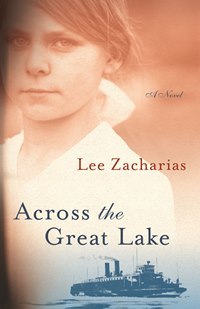 In many ways my new novel, Across the Great Lake, is a love song to a time and place. The setting is more than backdrop. It is the long-lost beloved, the place my narrator Fern yearns for. In fact, the novel began with place; I knew the setting before I knew any of the characters or their stories, that beautiful northwestern Michigan town with its shady streets, gracious old houses, Lake Michigan's crystal-clear water, the pristine beach, steep bluff beyond, most of all the haunting call of the foghorn, now long gone.
In many ways my new novel, Across the Great Lake, is a love song to a time and place. The setting is more than backdrop. It is the long-lost beloved, the place my narrator Fern yearns for. In fact, the novel began with place; I knew the setting before I knew any of the characters or their stories, that beautiful northwestern Michigan town with its shady streets, gracious old houses, Lake Michigan's crystal-clear water, the pristine beach, steep bluff beyond, most of all the haunting call of the foghorn, now long gone.
But it would be wrong to say I invented the characters simply to populate the novel. They and their stories grew out of that place, just as we are all formed, one way or another, by the places we come from. As Eudora Welty said in her essay "Place in Fiction," it does far more than "furnish a plausible abode for the novel's world of feeling," it "is the ground conductor of all the currents of emotion and belief and moral conviction..." Location serves to make the characters real.
My narrator, Fern, behaves the way she does and feels the way she feels, because of where she comes from, high on a hill above the loveliest of lovely streets in a town that sits on the opposite side of its harbor from what was still in the 1930s the industrial hub of Benzie County, the infinitely less lovely village of Elberta that is home to the apprentice deckhand, Alv, and many of the other sailors. The Frankfort of my novel is the domain of officers, Elberta the realm of iron workers, switch operators, and ordinary sea men.
I visited Frankfort once as a girl, a girl who grew up at the southern end of the lake, among the steel mills and oil refineries of Indiana's Calumet region. No one swam at our beach, which was often littered with dead alewives. The water was polluted. And so when I saw Frankfort I thought it was the most beautiful place I had ever been. To live there would be like living inside a sunlit picture post card.
 Lighthouse, Frankfort, Michigan (photo: Mark Johnson)
Lighthouse, Frankfort, Michigan (photo: Mark Johnson)
My reality was a sky dreary with smoke from the mills, a treeless lower middle class street lined with the cramped tract houses that had replaced the fouled prairie. I fell in love with Frankfort because I recognized Elberta, its railyard and asphalt tanks near the beach that stored petroleum products from a refinery no more than ten miles from my house, those tanks that gave the village a distinctive gassy odor. Our feelings about place are as much a part of us as the color of our eyes or shape of our toes, and I hated where I lived and longed to escape.
And so when I was twelve Frankfort became the locus of my other life, the fantasy I wished to live instead of the all-too-real world that seemed to drag out the sentence of childhood and adolescence that bound me to Hammond. In Frankfort I would be able to walk wherever I wanted to go. In Hammond I played in the school band, and every time the director called an evening rehearsal I had to ask for a ride from my father, who always let me know what at inconvenience it was. In Frankfort, I would be one of the teens playing volleyball on the beach instead the awkward pubescent ridiculed by the neighborhood boys. In Frankfort I would be free, not just of Hammond but of myself. Such, I imagined, is the power of place.
And yet Fern is no princess in my fairy tale other life. Tragic things happen to her. She is responsible for another. Though she belongs to a class my teenaged self aspired to, her unconscious sense of privilege contributes to the harm that will haunt the rest of her years, that will transform a lively, adventurous little girl into a woman incapable of fully engaging with her adult life. For her childhood is synonymous with the place that exile denies her. She yearns for Frankfort because it is hers. And as I wrote I yearned with her, but the reason I yearned for Frankfort and the lake my own father once sailed was because they had never been mine. The only way I could claim any part of them was to inhabit her, to write her story as if it were memoir.
~
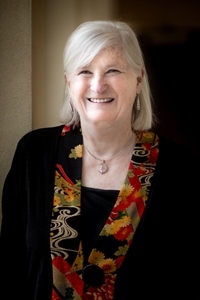 photo credit: Traci ArneyLee Zacharias is the author of a collection of short stories, Helping Muriel Make It Through the Night; three novels, Across the Great Lake, Lessons, and At Random; and a collection of personal essays, The Only Sounds We Make. She has received fellowships from the National Endowment for the Arts and the North Carolina Arts Council, North Carolina's Sir Walter Raleigh Award, Southern Humanities Review's Theodore Christian Hoepfner Award, Prairie Schooner's Glenna Luschei Award, and a Silver Medal in Creative Nonfiction from the Independent Publisher Book Awards (the IPPYs).
photo credit: Traci ArneyLee Zacharias is the author of a collection of short stories, Helping Muriel Make It Through the Night; three novels, Across the Great Lake, Lessons, and At Random; and a collection of personal essays, The Only Sounds We Make. She has received fellowships from the National Endowment for the Arts and the North Carolina Arts Council, North Carolina's Sir Walter Raleigh Award, Southern Humanities Review's Theodore Christian Hoepfner Award, Prairie Schooner's Glenna Luschei Award, and a Silver Medal in Creative Nonfiction from the Independent Publisher Book Awards (the IPPYs).
Her fiction and nonfiction have appeared in numerous journals and been recognized by The Best American Short Stories and The Best American Essay, which reprinted her essay "Buzzards" in its 2008 edition. She taught at the University of Arkansas, Princeton University, and the University of North Carolina Greensboro, where she is Emerita Professor of English, as well as many conferences, most recently the Wildacres Writers Workshop. Find her online at http://leezacharias.com.
~
Love Song: Frankfort, MichiganLee Zacharias
 In many ways my new novel, Across the Great Lake, is a love song to a time and place. The setting is more than backdrop. It is the long-lost beloved, the place my narrator Fern yearns for. In fact, the novel began with place; I knew the setting before I knew any of the characters or their stories, that beautiful northwestern Michigan town with its shady streets, gracious old houses, Lake Michigan's crystal-clear water, the pristine beach, steep bluff beyond, most of all the haunting call of the foghorn, now long gone.
In many ways my new novel, Across the Great Lake, is a love song to a time and place. The setting is more than backdrop. It is the long-lost beloved, the place my narrator Fern yearns for. In fact, the novel began with place; I knew the setting before I knew any of the characters or their stories, that beautiful northwestern Michigan town with its shady streets, gracious old houses, Lake Michigan's crystal-clear water, the pristine beach, steep bluff beyond, most of all the haunting call of the foghorn, now long gone.But it would be wrong to say I invented the characters simply to populate the novel. They and their stories grew out of that place, just as we are all formed, one way or another, by the places we come from. As Eudora Welty said in her essay "Place in Fiction," it does far more than "furnish a plausible abode for the novel's world of feeling," it "is the ground conductor of all the currents of emotion and belief and moral conviction..." Location serves to make the characters real.
My narrator, Fern, behaves the way she does and feels the way she feels, because of where she comes from, high on a hill above the loveliest of lovely streets in a town that sits on the opposite side of its harbor from what was still in the 1930s the industrial hub of Benzie County, the infinitely less lovely village of Elberta that is home to the apprentice deckhand, Alv, and many of the other sailors. The Frankfort of my novel is the domain of officers, Elberta the realm of iron workers, switch operators, and ordinary sea men.
I visited Frankfort once as a girl, a girl who grew up at the southern end of the lake, among the steel mills and oil refineries of Indiana's Calumet region. No one swam at our beach, which was often littered with dead alewives. The water was polluted. And so when I saw Frankfort I thought it was the most beautiful place I had ever been. To live there would be like living inside a sunlit picture post card.
 Lighthouse, Frankfort, Michigan (photo: Mark Johnson)
Lighthouse, Frankfort, Michigan (photo: Mark Johnson)My reality was a sky dreary with smoke from the mills, a treeless lower middle class street lined with the cramped tract houses that had replaced the fouled prairie. I fell in love with Frankfort because I recognized Elberta, its railyard and asphalt tanks near the beach that stored petroleum products from a refinery no more than ten miles from my house, those tanks that gave the village a distinctive gassy odor. Our feelings about place are as much a part of us as the color of our eyes or shape of our toes, and I hated where I lived and longed to escape.
And so when I was twelve Frankfort became the locus of my other life, the fantasy I wished to live instead of the all-too-real world that seemed to drag out the sentence of childhood and adolescence that bound me to Hammond. In Frankfort I would be able to walk wherever I wanted to go. In Hammond I played in the school band, and every time the director called an evening rehearsal I had to ask for a ride from my father, who always let me know what at inconvenience it was. In Frankfort, I would be one of the teens playing volleyball on the beach instead the awkward pubescent ridiculed by the neighborhood boys. In Frankfort I would be free, not just of Hammond but of myself. Such, I imagined, is the power of place.
And yet Fern is no princess in my fairy tale other life. Tragic things happen to her. She is responsible for another. Though she belongs to a class my teenaged self aspired to, her unconscious sense of privilege contributes to the harm that will haunt the rest of her years, that will transform a lively, adventurous little girl into a woman incapable of fully engaging with her adult life. For her childhood is synonymous with the place that exile denies her. She yearns for Frankfort because it is hers. And as I wrote I yearned with her, but the reason I yearned for Frankfort and the lake my own father once sailed was because they had never been mine. The only way I could claim any part of them was to inhabit her, to write her story as if it were memoir.
~
 photo credit: Traci ArneyLee Zacharias is the author of a collection of short stories, Helping Muriel Make It Through the Night; three novels, Across the Great Lake, Lessons, and At Random; and a collection of personal essays, The Only Sounds We Make. She has received fellowships from the National Endowment for the Arts and the North Carolina Arts Council, North Carolina's Sir Walter Raleigh Award, Southern Humanities Review's Theodore Christian Hoepfner Award, Prairie Schooner's Glenna Luschei Award, and a Silver Medal in Creative Nonfiction from the Independent Publisher Book Awards (the IPPYs).
photo credit: Traci ArneyLee Zacharias is the author of a collection of short stories, Helping Muriel Make It Through the Night; three novels, Across the Great Lake, Lessons, and At Random; and a collection of personal essays, The Only Sounds We Make. She has received fellowships from the National Endowment for the Arts and the North Carolina Arts Council, North Carolina's Sir Walter Raleigh Award, Southern Humanities Review's Theodore Christian Hoepfner Award, Prairie Schooner's Glenna Luschei Award, and a Silver Medal in Creative Nonfiction from the Independent Publisher Book Awards (the IPPYs).Her fiction and nonfiction have appeared in numerous journals and been recognized by The Best American Short Stories and The Best American Essay, which reprinted her essay "Buzzards" in its 2008 edition. She taught at the University of Arkansas, Princeton University, and the University of North Carolina Greensboro, where she is Emerita Professor of English, as well as many conferences, most recently the Wildacres Writers Workshop. Find her online at http://leezacharias.com.
Published on September 18, 2018 04:00
September 16, 2018
A visual preview of the fall 2018 season in historical fiction
Fall is almost upon us, bringing with it a new crop of historical novels. Here are ten, chosen purely out of personal interest. Are you planning on reading any of them? Please leave your thoughts in the comments.
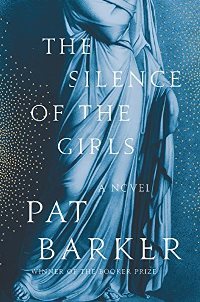
A new retelling of the Trojan War, as seen from the viewpoint of Briseis, a former queen turned captive. Barker has said that this is the novel she hopes she'll be remembered for. Doubleday, Sept. (this one is out now). [see on Goodreads]
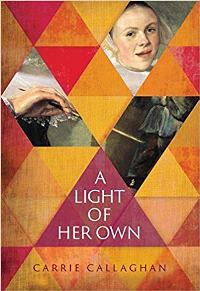
The story of Judith Leyster, a painter of the Dutch Golden Age in the 17th century, and her ambitions to join the artists' guild in Haarlem. Amberjack, Nov. [see on Goodreads]

Alva Smith Vanderbilt, known in Gilded Age society for her opulent masquerade balls and unstoppable ambition, especially where her daughter was concerned, later became a prominent women's rights supporter. St. Martin's, Oct. [see on Goodreads]
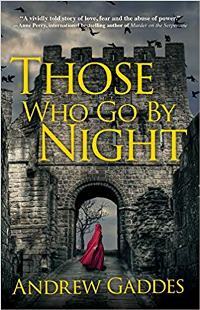
In the 14th century, a Templar's son is sent to a rural English village to solve a mysterious murder and gets caught up in a tangled nest of secrets. Crooked Lane, Nov. [see on Goodreads]
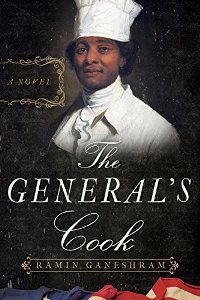
The story of Hercules, acclaimed chef to President Washington in late 18th-century Philadelphia: an enslaved man in a city famed for its principles of liberty. Based on a true story. Arcade, Nov. [see on Goodreads]
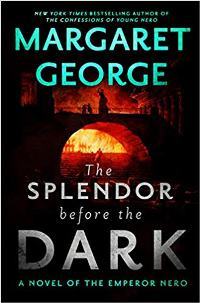
The Splendor Before the Dark is part two (after The Confessions of Young Nero) of the outrageous life story of Emperor Nero, told in his own lively voice and seen here in a new and sympathetic light. Berkley, Nov. [see on Goodreads]
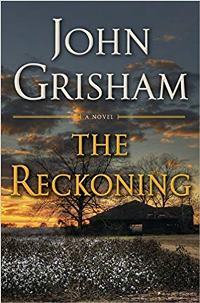
I've yet to read one of Grisham's novels, and this one dovetails with my historical fiction interests. It's described as a mixture of legal thriller and Southern Gothic, centering on the mysterious killing of a Mississippi pastor in 1946 by one of his good friends. Doubleday, Oct. [see on Goodreads]
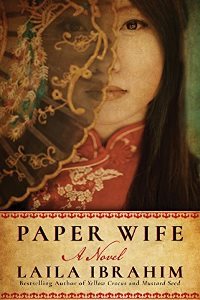
In hopes of a more prosperous life, a young woman travels from China to San Francisco in 1923 to establish a new life with a husband she doesn't know; she also works hard to save an orphan she met en route. Lake Union, Oct. [see on Goodreads]
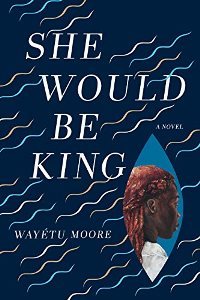
The story of Liberia's founding in the 19th century, told through the viewpoints of several characters, and with a touch of magical realism. Graywolf, Sept. (out now). [see on Goodreads]
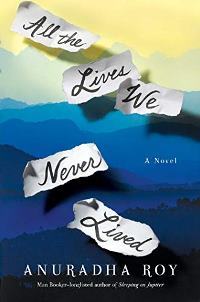
Roy's novel examines mid-20th-century India through the stories of a man who uncovers his artist mother's itinerant life through India and Bali, as he searches for the reasons she left her family behind. Atria, Nov. [see on Goodreads]

A new retelling of the Trojan War, as seen from the viewpoint of Briseis, a former queen turned captive. Barker has said that this is the novel she hopes she'll be remembered for. Doubleday, Sept. (this one is out now). [see on Goodreads]

The story of Judith Leyster, a painter of the Dutch Golden Age in the 17th century, and her ambitions to join the artists' guild in Haarlem. Amberjack, Nov. [see on Goodreads]

Alva Smith Vanderbilt, known in Gilded Age society for her opulent masquerade balls and unstoppable ambition, especially where her daughter was concerned, later became a prominent women's rights supporter. St. Martin's, Oct. [see on Goodreads]

In the 14th century, a Templar's son is sent to a rural English village to solve a mysterious murder and gets caught up in a tangled nest of secrets. Crooked Lane, Nov. [see on Goodreads]

The story of Hercules, acclaimed chef to President Washington in late 18th-century Philadelphia: an enslaved man in a city famed for its principles of liberty. Based on a true story. Arcade, Nov. [see on Goodreads]

The Splendor Before the Dark is part two (after The Confessions of Young Nero) of the outrageous life story of Emperor Nero, told in his own lively voice and seen here in a new and sympathetic light. Berkley, Nov. [see on Goodreads]

I've yet to read one of Grisham's novels, and this one dovetails with my historical fiction interests. It's described as a mixture of legal thriller and Southern Gothic, centering on the mysterious killing of a Mississippi pastor in 1946 by one of his good friends. Doubleday, Oct. [see on Goodreads]

In hopes of a more prosperous life, a young woman travels from China to San Francisco in 1923 to establish a new life with a husband she doesn't know; she also works hard to save an orphan she met en route. Lake Union, Oct. [see on Goodreads]

The story of Liberia's founding in the 19th century, told through the viewpoints of several characters, and with a touch of magical realism. Graywolf, Sept. (out now). [see on Goodreads]

Roy's novel examines mid-20th-century India through the stories of a man who uncovers his artist mother's itinerant life through India and Bali, as he searches for the reasons she left her family behind. Atria, Nov. [see on Goodreads]
Published on September 16, 2018 07:00
September 13, 2018
On writing Lone Wolf in Jerusalem, a guest post by Ehud Diskin
In today's essay, Ehud Diskin, a bestselling author in Israel, writes about his reasons for writing historical fiction and the research process for his new novel. Lone Wolf in Jerusalem was published by Greenleaf Book Group in August.
~
On Writing Lone Wolf in JerusalemEhud Diskin
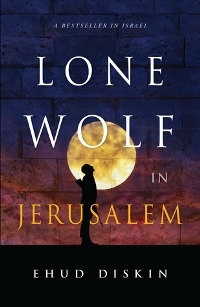 I wanted to write the history of Israel in the 1940s prior to the establishment of the state of Israel and to tell about the people who fought hard for it --- to tell the story of the Jews who survived Europe after WWII and came to Israel to establish a Jewish state. I took into consideration that today, a lot of people don’t read history books, and in order to tell the history also to those people, I decided to write a historical novel. I used elements of suspense, action, drama, adventure, and romance, so that it will interest most potential readers.
I wanted to write the history of Israel in the 1940s prior to the establishment of the state of Israel and to tell about the people who fought hard for it --- to tell the story of the Jews who survived Europe after WWII and came to Israel to establish a Jewish state. I took into consideration that today, a lot of people don’t read history books, and in order to tell the history also to those people, I decided to write a historical novel. I used elements of suspense, action, drama, adventure, and romance, so that it will interest most potential readers.
Originally the book was written in Hebrew, and the fact that it had rapidly became a bestseller proved my intent.
My novel is set in the same time period as Leon Uris’s Exodus. I wrote my novel as someone who knows Israel and its history in the 20th century. I am a seventh generation Israeli. I was born and lived as a child in a besieged Jerusalem, fought in three wars and reached the rank of a colonel.
As a result, I could truly imagine the story of the fictional hero of the book, David Gabinsky, who leads a courageous group of Jewish partisans in Belarus and after the war, makes his way to Jerusalem to help his people find freedom from the British. The characters in the book are fictional, but the history is accurate. The reader finds himself involved with the characters of Jerusalem in those days, and learns through the main characters, the true experiences of people who lived during that time.
When I wrote this book, besides reading many books about that period (there is a bibliography list in the end of the book), I researched and reviewed a lot of documents. In Israel in the 1940s there were three Jewish undergrounds who fought the British. Each of them had a different point of view not only ideologically, but they saw each event differently. I had to research to find out what really happened. I interviewed people who lived at that period; they were in their 80s and 90s. I visited all the places in Jerusalem that I wrote about. I researched the names of the streets in those days, and in the beginning of the book there is a diagram map of Jerusalem related to the relevant period and to the book.
Besides being recently published in English, the novel was also translated in Russian. A Russian reader sent me letter expressing her enthusiasm for the book and why she felt it was an important look at Israel. I am pleased because it shows that the idea of telling the history through a historical novel was successful.
~
Ehud Diskin was born in Jerusalem. He served as an officer in combat roles during Israel's wars, as detailed in his memoir, Yes, It's Possible, and ended his military career with the rank of colonel. After attending the Hebrew University of Jerusalem, he earned a PhD in business management and became the director of the LIBI fund, collecting contributions from all over the world to provide support for the education of soldiers. Later, he left the public sector and became a businessman, establishing several successful enterprises in the United States. Find out more and read reviews of the original edition at lonewolfinjerusalem.com.
~
On Writing Lone Wolf in JerusalemEhud Diskin
 I wanted to write the history of Israel in the 1940s prior to the establishment of the state of Israel and to tell about the people who fought hard for it --- to tell the story of the Jews who survived Europe after WWII and came to Israel to establish a Jewish state. I took into consideration that today, a lot of people don’t read history books, and in order to tell the history also to those people, I decided to write a historical novel. I used elements of suspense, action, drama, adventure, and romance, so that it will interest most potential readers.
I wanted to write the history of Israel in the 1940s prior to the establishment of the state of Israel and to tell about the people who fought hard for it --- to tell the story of the Jews who survived Europe after WWII and came to Israel to establish a Jewish state. I took into consideration that today, a lot of people don’t read history books, and in order to tell the history also to those people, I decided to write a historical novel. I used elements of suspense, action, drama, adventure, and romance, so that it will interest most potential readers. Originally the book was written in Hebrew, and the fact that it had rapidly became a bestseller proved my intent.
My novel is set in the same time period as Leon Uris’s Exodus. I wrote my novel as someone who knows Israel and its history in the 20th century. I am a seventh generation Israeli. I was born and lived as a child in a besieged Jerusalem, fought in three wars and reached the rank of a colonel.
As a result, I could truly imagine the story of the fictional hero of the book, David Gabinsky, who leads a courageous group of Jewish partisans in Belarus and after the war, makes his way to Jerusalem to help his people find freedom from the British. The characters in the book are fictional, but the history is accurate. The reader finds himself involved with the characters of Jerusalem in those days, and learns through the main characters, the true experiences of people who lived during that time.
When I wrote this book, besides reading many books about that period (there is a bibliography list in the end of the book), I researched and reviewed a lot of documents. In Israel in the 1940s there were three Jewish undergrounds who fought the British. Each of them had a different point of view not only ideologically, but they saw each event differently. I had to research to find out what really happened. I interviewed people who lived at that period; they were in their 80s and 90s. I visited all the places in Jerusalem that I wrote about. I researched the names of the streets in those days, and in the beginning of the book there is a diagram map of Jerusalem related to the relevant period and to the book.
Besides being recently published in English, the novel was also translated in Russian. A Russian reader sent me letter expressing her enthusiasm for the book and why she felt it was an important look at Israel. I am pleased because it shows that the idea of telling the history through a historical novel was successful.
~
Ehud Diskin was born in Jerusalem. He served as an officer in combat roles during Israel's wars, as detailed in his memoir, Yes, It's Possible, and ended his military career with the rank of colonel. After attending the Hebrew University of Jerusalem, he earned a PhD in business management and became the director of the LIBI fund, collecting contributions from all over the world to provide support for the education of soldiers. Later, he left the public sector and became a businessman, establishing several successful enterprises in the United States. Find out more and read reviews of the original edition at lonewolfinjerusalem.com.
Published on September 13, 2018 04:57
September 9, 2018
The Locksmith's Daughter by Karen Brooks, a spy story of Elizabethan London
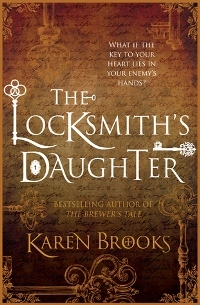 Australian cover (Harlequin, 2016)Karen Brooks’ first historical novel,
The Brewer’s Tale
, charted the travails of a young woman who dared enter a traditional male profession in early 15th-century England, and the repercussions she faced. The Locksmith’s Daughter, the author’s follow-up novel, moves forward a century and a half to Elizabethan times. It follows the intrigue-filled life of Mallory Bright, another talented woman who finds herself in a profession reserved for men. Her role is more covert than that of Brooks’ earlier heroine, Anneke Sheldrake, but it proves to be equally treacherous.
Australian cover (Harlequin, 2016)Karen Brooks’ first historical novel,
The Brewer’s Tale
, charted the travails of a young woman who dared enter a traditional male profession in early 15th-century England, and the repercussions she faced. The Locksmith’s Daughter, the author’s follow-up novel, moves forward a century and a half to Elizabethan times. It follows the intrigue-filled life of Mallory Bright, another talented woman who finds herself in a profession reserved for men. Her role is more covert than that of Brooks’ earlier heroine, Anneke Sheldrake, but it proves to be equally treacherous. The setting is 1580s London, which Brooks richly evokes through her descriptions of clothing and architecture as well as the characters’ period vocabulary. There are many phrases recognizable from Shakespeare (“Go to,” for instance) and others compelling enough to invite re-use today (“cupshotten,” meaning drunk).
The taut political intrigue of the times is ever-present, too. The religious tolerance of Queen Elizabeth’s earlier reign, her statement against making “windows into men’s souls,” has begun to evaporate in the face of Catholic threats against her realm. No one pursues these perceived traitors as fervently as Sir Francis Walsingham, Her Majesty’s principal secretary and spymaster.
Mallory gets drawn into Walsingham’s network because of a scandal in her recent past. Having just returned to her father’s home after a traumatic would-be elopement, Mallory pretends to be a widow to avoid public rebuke. (On this note, it’s curious to hear others call her “Mistress Mallory” rather than her supposed married name.) Although she was given a good education and learned lock-picking at her father’s knee, her unfortunate romantic decision means she’s now a burden and embarrassment to her parents. Only Caleb, an actor who lodges with their family, seems supportive and understanding.
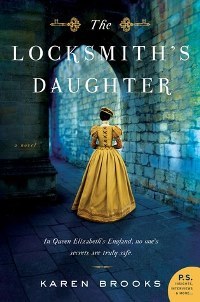 US Cover (Morrow, 2018)When her father’s old friend Walsingham comes to test her skills and offers her an opportunity to work for him secretly, she knows it’s the only way forward for her future. Brooks makes Mallory’s circumstances relatable; at first, she soaks up Walsingham’s praise for her accomplishments. However, when she sees Catholics rounded up for doing nothing more than worshipping differently, and the impact later hits far closer to home, she develops ambivalence and then doubt about her role.
US Cover (Morrow, 2018)When her father’s old friend Walsingham comes to test her skills and offers her an opportunity to work for him secretly, she knows it’s the only way forward for her future. Brooks makes Mallory’s circumstances relatable; at first, she soaks up Walsingham’s praise for her accomplishments. However, when she sees Catholics rounded up for doing nothing more than worshipping differently, and the impact later hits far closer to home, she develops ambivalence and then doubt about her role. As the mysteries from Mallory’s past are slowly revealed, the plot spins into a propulsive, sometimes over-the-top thriller that moves from Walsingham’s lair on Seething Lane (a great and historically accurate name) to the grim Tower of London, and into the company of a lanky nobleman who sailed with Francis Drake and has his own demons to fight. The book’s length may seem intimidating, but it moves fast. It conveys an overall message of tolerance while maintaining the atmosphere of multi-cultural Tudor London and providing a mini-lesson on the intricate art of lock-picking.
The Locksmith's Daughter was recently published in the US by Morrow, but was previously published in the author's home country of Australia by Harlequin (who had provided me access via NetGalley in 2016; my apologies for the delayed appearance of this review).
Published on September 09, 2018 13:40
September 5, 2018
Signe Pike's The Lost Queen, about an early British queen and the Arthurian legends
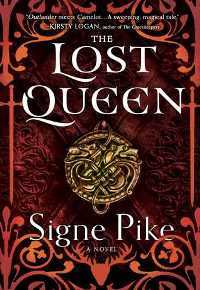 Pike bases her engrossing debut on recent research into the Arthurian legends’ possible Scottish origins. Fiery-haired, strong-willed Languoreth, daughter of King Morken of Goddeu, adores the wild places and pagan rituals at her home at Cadzow Fortress in Strathclyde. However, she resents that her destiny lies in an advantageous marriage rather than training to become a Wisdom Keeper (druid) like her twin brother, Lailoken.
Pike bases her engrossing debut on recent research into the Arthurian legends’ possible Scottish origins. Fiery-haired, strong-willed Languoreth, daughter of King Morken of Goddeu, adores the wild places and pagan rituals at her home at Cadzow Fortress in Strathclyde. However, she resents that her destiny lies in an advantageous marriage rather than training to become a Wisdom Keeper (druid) like her twin brother, Lailoken.Her story, beginning at age 10, has a slow but compelling build. As she grows into adolescence, danger threatens her livelihood from different sides: the invading Anglo-Saxons are attacking villages, while Christianity’s influence is increasing. Although reluctantly agreeing to wed Rhydderch, the tyrannical High King’s son, Languoreth’s heart remains with the warrior Maelgwn.
Pike’s narrative blends court intrigue, romantic interludes, and gritty violence into a literary brew worth savoring to the dramatic finale. The elements of Celtic mysticism will appeal to fantasy fans looking for a Mists of Avalon–type experience, while the setting remains grounded in sixth-century Scotland’s political realities. Enthusiastically recommended for readers of female-centered historical sagas and those enamored of Arthurian tales.
The Lost Queen, first in a trilogy, was published by Touchstone/Simon & Schuster this week. I read it in June, and the review appeared in August's issue of Booklist.
Published on September 05, 2018 17:31



